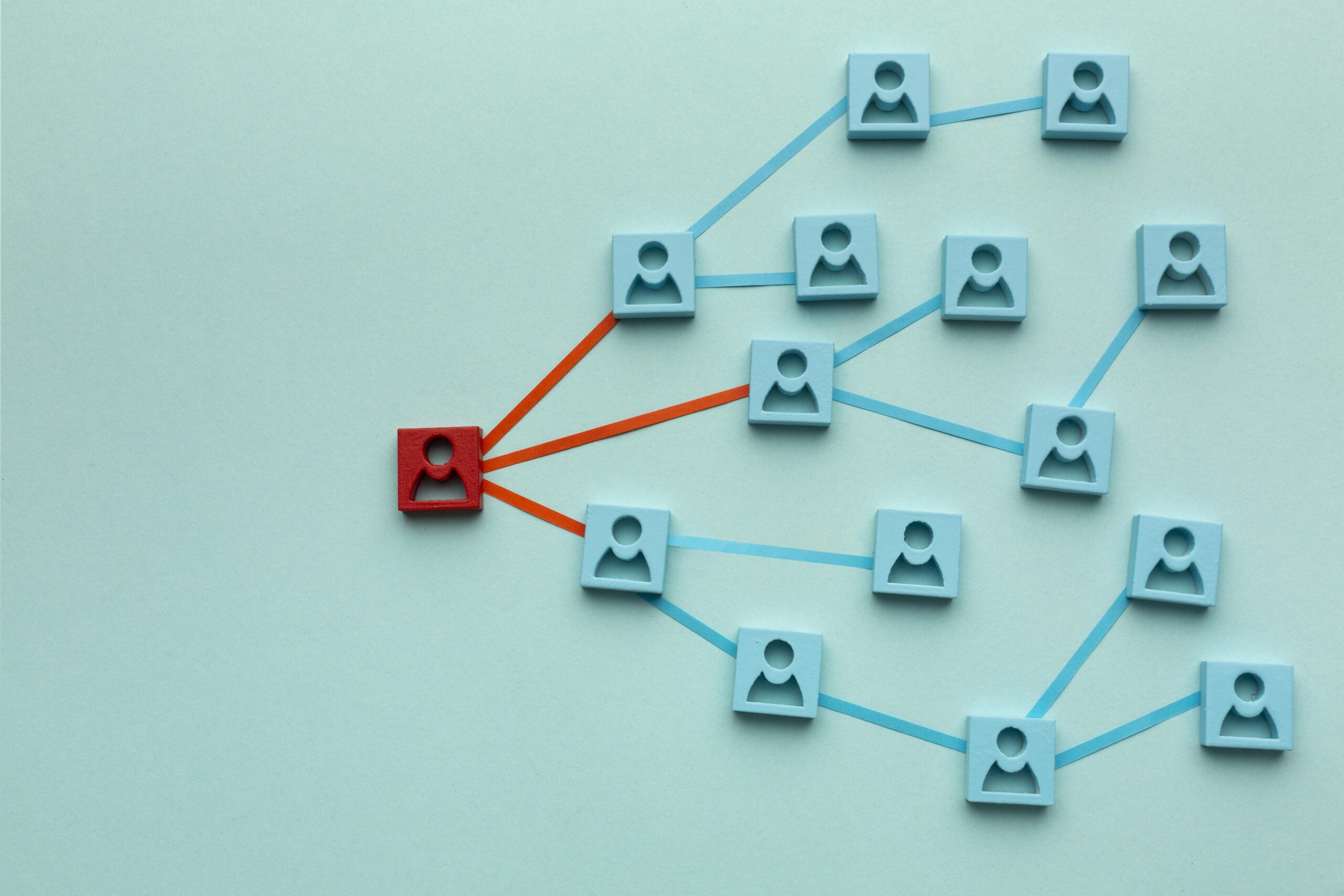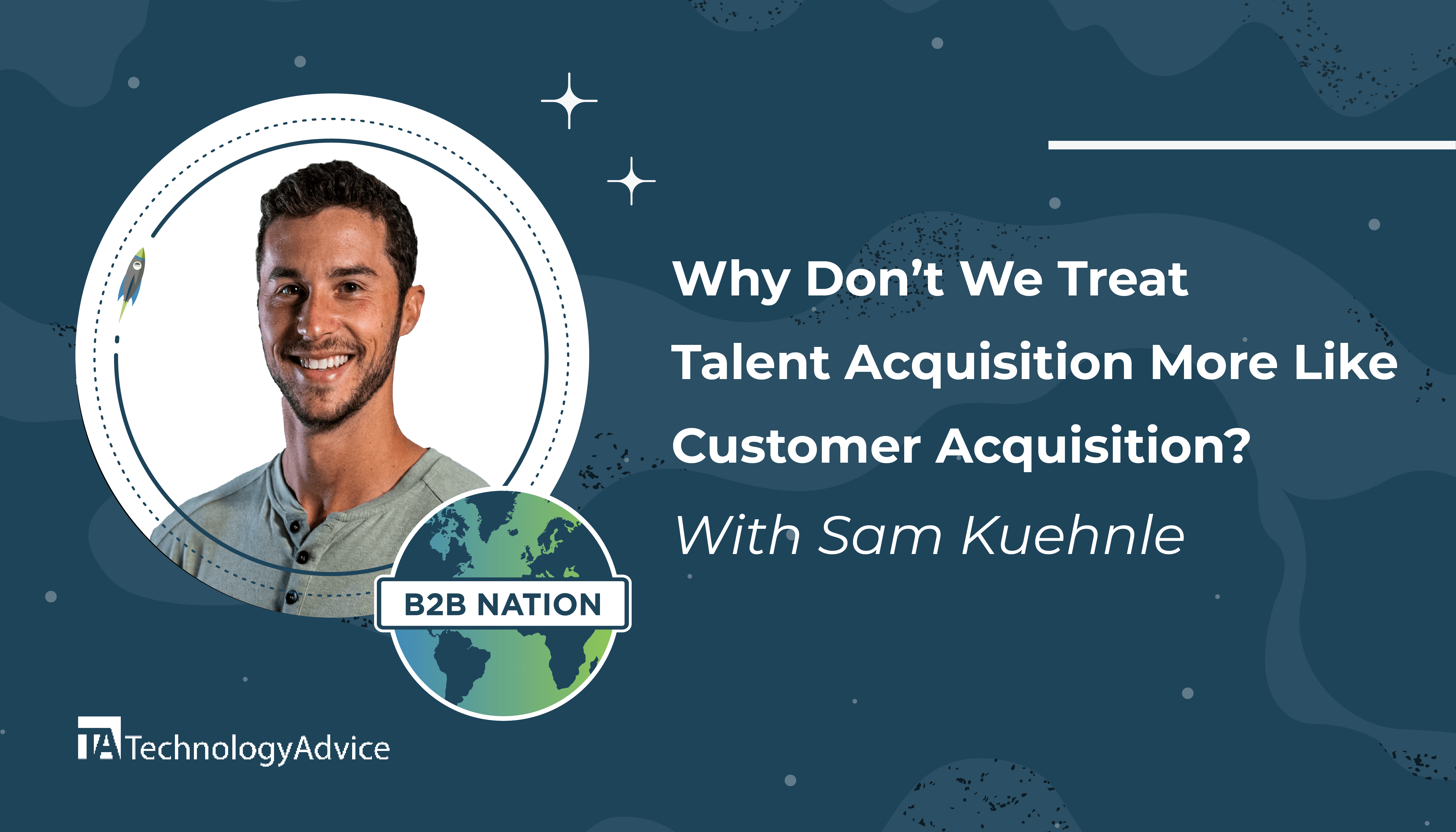The Job
Sibley is responsible for generating demand at the top of the funnel — or “TOFU” as she and others have affectionately dubbed it. At HubSpot, TOFU leads come almost entirely from content downloads. If you’ve ever visited the HubSpot website or blog, you’ve probably used one of their innumerable online tools (e.g. Website Grader, MakeMyPersona), downloaded an e-book, or registered to view a research report. I know I have. After HubSpot’s dedicated content team creates these assets, Sibley’s team launches campaigns and manages their promotional channels to drive traffic, downloads, and ultimately, leads. But it didn’t always work that way. “Three or four years ago, content and demand were the same team,” Sibley says. “We all used to create content. Each person had a quota for blog posts — not to mention the e-books we created.” Three or four years ago, content and demand were the same team. Now Sibley focuses mostly on campaign deployment and works with other team leads and regional marketing managers to to coordinate timing and production. She also runs co-marketing plays, which involve partnering with other brands to create and syndicate content. How does Sibley drive 60,000 organic leads per month? “It’s all about getting a ton of pieces of content that are high-quality and search-optimized,” she says. What does that look like on a daily basis? What does a typical workday look like for the HubSpot demand gen manager, if such a thing can be said to exist? Here’s what I discovered:Morning
When she isn’t working remotely, Sibley works from the HubSpot headquarters in Cambridge, Mass. Her office is on the second floor of The Davenport building — a renovated brick and beam furniture factory one block back from the canal. She gets into the office early, which by HubSpot standards means between 8 and 8:30. Employees are encouraged to work flexible schedules; many come in later and work later by preference. Sibley sits down at her desk, coffee in hand, and checks her email. She tries, or at least aspires, to reach “inbox zero” at the end of every day, but this rarely happens. Today is a day of Inbox 35 — some spam, some from team members, some from marketing managers on different time zones in Australia, Japan, and Singapore, and Dublin. Sibley responds to the urgent ones and jots down a few to-do items from others, then checks her calendar for the day. The week and the day are laid out in neat, color-coded cells across her Google Calendar. Two meetings before lunch, three after, which is normal. “Some days,” she says, “I literally have meetings from 9 a.m. to 6 p.m.” Next, she creates a handwritten task list for the day. Working from her email inbox and from a master list in Trello, she writes down just enough items to keep her busy, but not enough to blow her lid. Some of these are people management tasks:- Follow up on recently launched social campaign (any roadblocks? results?)
- Prep for day’s meetings
- Create a social retargeting campaign for recently released e-book (download contact list, upload into Facebook, design ad creative, launch campaign)
- Read/edit e-book submitted by HubSpot partner
Lunch
Lunch, today, is from the Chipotle on First Street. Amanda brings her food back to the office and sits at a table in the atrium between weathered inner-facades that betray the building’s age, if nothing else does. She chats with one of HubSpot’s many new employees about her job, her experience so far, and the sights and sounds of Cambridge. They’ve been hiring 2-5 new marketers every month. “My lunches are almost always filled,” she said during our conversation. “They’re working lunches. Useful, but enjoyable. Lunch is actually one of my favorite times. I sound like I’m in elementary school . . .” But she feels this way for a reason. Lunchtime conversations, she says, are an opportunity to see people on a different level — to learn about someone in a way you couldn’t from a work desk. “That’s so important in business. Relationships are still number one.”Afternoon
For Amanda Sibley, afternoons are usually filled with meetings — meetings with the content team, with individual team members, with her demand gen team, and with other company leaders. Sometimes she even sits in on a demo with sales if they need demand gen expertise to close a deal. Today? The weekly demand generation team meeting. This meeting is a time to discuss projects, progress of TOFU campaigns, and ongoing goals. During the second half, Sibley opens the floor for discussion: comments, questions, requests, and so forth. This team meeting, in particular, is marked by discussion of INBOUND 2016, HubSpot’s massively popular event for marketers, salespeople, and advertisers. While INBOUND isn’t a lead generation play in the traditional sense, it is highly successful in promoting and strengthening the HubSpot brand. Last year, the event attracted over 14,000 attendees. Sibley and her team don’t usually plan this far out, but the 2016 conference will be in November instead of the usual September, and they’re expecting even more attendees this year. The DRI (directly responsible individual) for INBOUND gives an update on registration goals, what campaigns are in play, and what the INBOUND team needs from the demand gen team. Later on, Sibley moves to a different conference room and sits through a strategy meeting with other managers. Then a meeting with the content team. Then a “one-to-one” with one of her own team members. She holds these on a regular basis to make sure people are happy and have the necessary tools to succeed. “Regardless of the team size, I think these kinds of meetings are really important, whether it’s peer-to-peer or manager-to-employee. You need to stay up-to-date on what everyone is doing.” By 5 p.m., she’s back at her desk, checking emails again. “It’s like a sandwich. What I did in the morning, I do again in the evenings.” A few in, a few out, a few to save for follow-up tomorrow. Still no inbox zero, but a little closer, at least.After Hours
Since there are no fires to extinguish, Amanda leaves around 5:45. She lives two miles from the office. On a late March day, it’s an uncanny 60 degrees and sunny, so she walks home instead of taking the subway. Loath to waste a single minute, she dons earbuds and listens to an archived episode of The Growth Show, HubSpot’s own podcast targeted toward business leaders and entrepreneurs. This episode is about 90+ Cellars, a wine brand that launched during the recession and grew its profits by 580 percent in five years by buying and relabeling surplus wine from esteemed vineyards. Sibley likes wine and likes to know how to pick a good bottle. She also likes business growth. The podcast is so interesting that she scarcely realizes she’s made it home. Sibley likes wine and likes to know how to pick a good bottle. She also likes business growth. “I try to make the most out of my walk home — do something businessy, but enjoyable,” Sibley says. “When I get home, it’s my time. I make a nice dinner and spend time with my family. Maybe read a book or watch a little TV.” Her new favorite show is Scandal, but she missed the beginning of the season and is now waiting for the Netflix release to catch up. Tonight, it’s looking like House of Cards. Before bed, Sibley checks her email one last time, scanning for urgent requests from her team. The rest can wait for a new day.*
I asked Amanda to tell me not just about her routines and responsibilities, but about her experience. What motivates her to succeed? What worries her at the end of the day, after the dust of productivity has settled? She said she finds the most fulfillment in watching a team member succeed with a difficult project, especially when they learn something new. And of course, as a demand gen manager, she likes watching a campaign skyrocket, like the co-marketing webinar she planned in 2014 that brought in execs from the three major social networks — Facebook, Twitter, and LinkedIn — and amassed over 50,000 signups. HubSpot is good at what they do, and so is Amanda Sibley. They know the game (because they helped invent it) and play the game well. But she worries that, one day, the rules may change. New Google algorithms are always a challenge, given HubSpot’s heavy reliance on organic traffic. And on a deeper level, she wonders what would happen if the paradigm shifted — if buyers were suddenly unwilling to trade their contact information for valuable, educational content. May we as marketers never know this phantasm.Amanda Sibley is the manager of the demand generation team at HubSpot. The demand generation team is responsible for generating 60k+ leads a month for the HubSpot sales team. Previously, Amanda ran the co-marketing team, where she worked with content partners to create co-branded lead generation campaigns. She is a regular contributor to the HubSpot marketing blog and creator of ebooks, where she writes about topics including PPC, online advertising, Facebook marketing, and social media.



